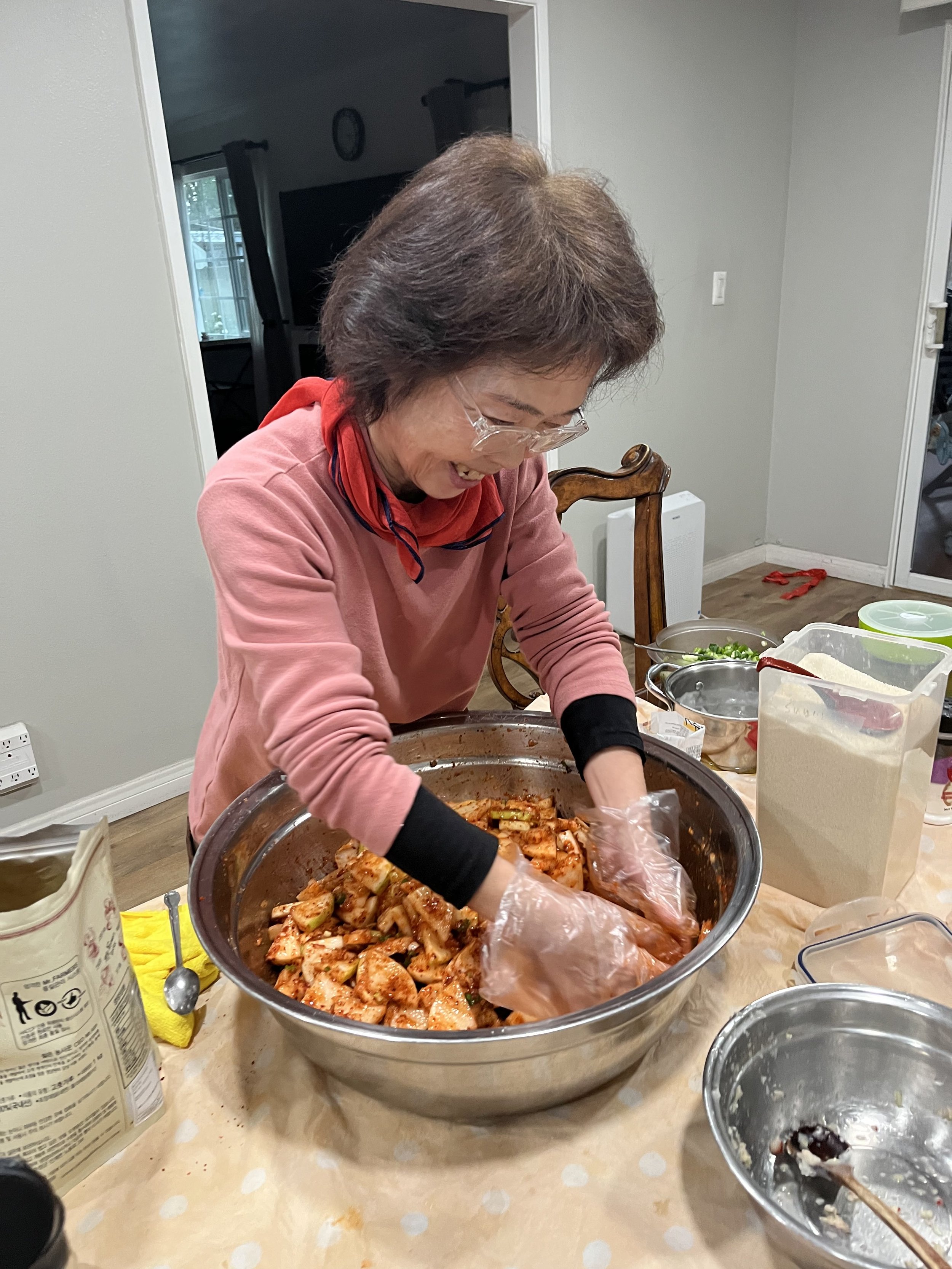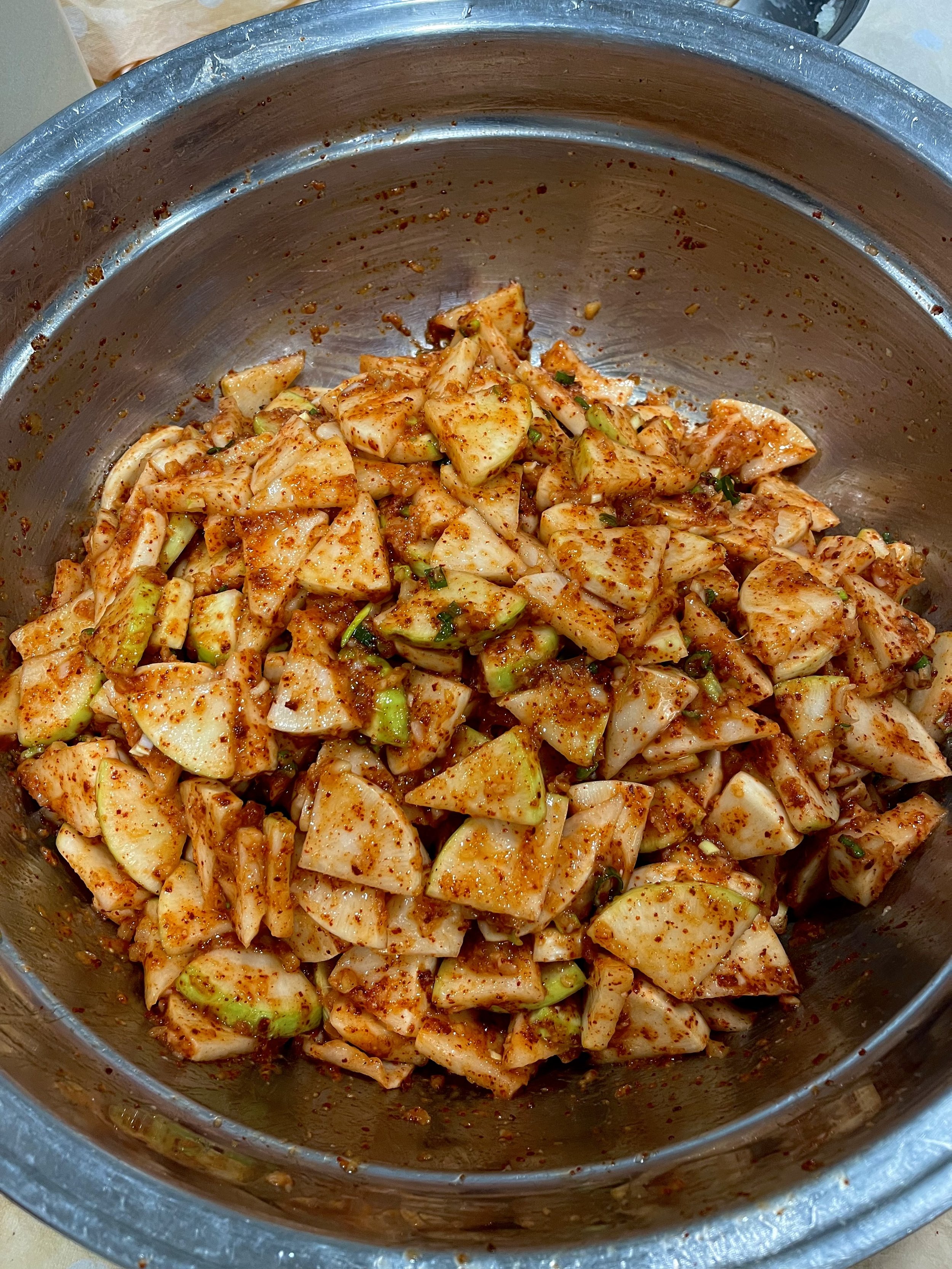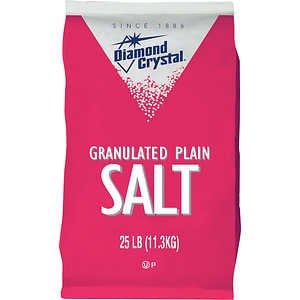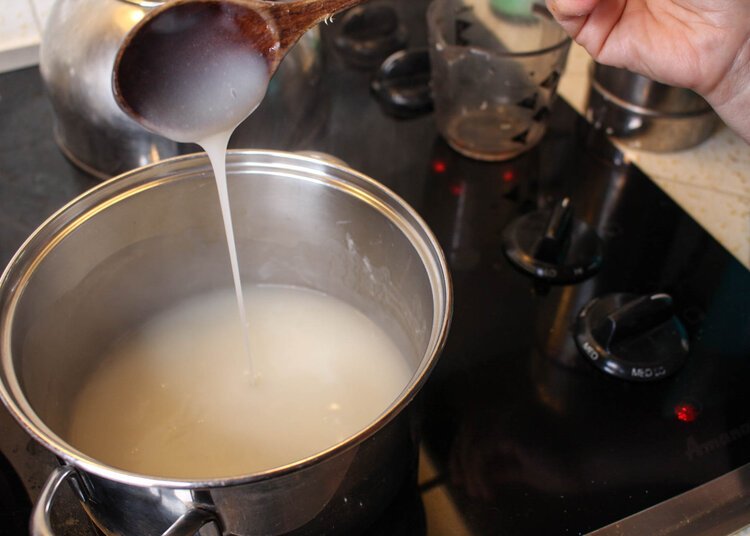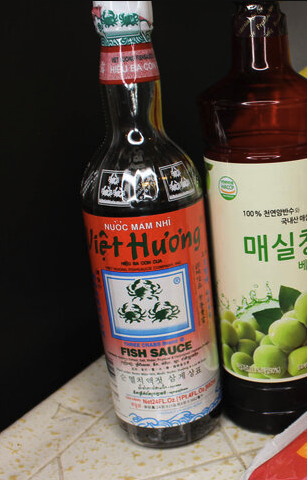Key Ingredients to Making Good Kimchi
When my Mom was younger, she thought making kimchi was easy— just mix everything in a bowl, give it a couple of days to ferment, and you’ve got kimchi.
However, after 30 years of testing different recipes and applying what she had learned from her own Mother in Korea, she’s finally realized the importance of these key ingredients to make good kimchi.
Here’s a breakdown of key ingredients she uses for her kimchi recipes.
Granulated Plain Salt or Course Sea Salt (from Korean Markets)
This is arguably the most important ingredient. The type of salt you use matters when making kimchi and plays a big role in drawing out moisture and seasoning.
Recommendation: My Mom uses Diamond Crystal Granulated Plain Salt that you can get at Business Costcos and online. Another great and even better salt is course sea salt sold from Korean markets. These salts are specifically made for making kimchi. The reason why my Mom doesn’t use this type of salt is that it’s much pricier than the former.
High-Quality Gochugaru
There are 2 kinds of gochugaru: low-quality and high-quality. And you will see and taste the difference between the two. Don’t risk making kimchi with low-quality gochugaru. My Mom personally uses course gochugaru, but you’re welcome to use fine (a lot of Koreans mix fine and course too!).
Recommendation: Here’s how to shop for high-quality gochugaru.
Make sure it’s a Product of Korea
Check the color. It should not be a dull red color.
Check the price. Low-quality gochugaru tend to be significantly cheaper ($7-$10 for 1 kg). High quality is typically anywhere from $30 to $55 for 1kg).
Flour Mixture/Paste
There are 2 reasons why this flour mixture/paste is added. First, it helps to ferment kimchi, which is food for lactic acid bacteria. And secondly, it helps bind the seasonings to the vegetable (e.g. cabbage or radish).
Recommendation: You can use any type of flour and even cooked rice (you don’t need to be rice flour. As a matter of fact, my Mom never uses rice flour — she just uses whatever flour we have on hand). Just create it into a paste and let it cool. For exact instructions, use my kimchi and kakkdugi recipes, liked below.
Salted Fermented Shrimp (Saeujeot 새우젓) + Fish Sauce
Salted fermented “baby” shrimp and fish sauce are used to add an umami taste to the kimchi. My Mom has tried making kimchi without the shrimp and there was a significant taste difference (and not for better!).
Recommendation: Blend the shrimp in a blender so that the flavor soaks into the kimchi better. For the fish sauce, we primarily use the Three Crabs Fish Sauce.
Korean Plum Extract (Maesil Cheong 매실청) + New Sugar
In addition to using regular white sugar in my Mom’s kimchi recipes, my Mom uses these additional ingredients.
Korean Plum Extract adds a mild, fruity sweetness and helps aid with digestion since it’s fermented.
New Sugar is comprised of sodium saccharin, the solid form of the artificial sweetener saccharin, and glucose. Just a little bit of this sweetener adds enough sweetness to the kimchi (versus having to add in a lot of white sugar) because new sugar is about 550 times as sweet as sucrose.Recommendation: Korean Plum Extract can be found at Korean markets. We use CJ brand. New Sugar can be found in Korean markets as well in the seasoning section.
Other basic essentials to seasoning kimchi can include: brown onion, green onions, ginger, fruit (e.g. asian pear/persimmons/apples are my Mom’s go-tos), and garlic that’s typically blended or pulsed in the blender or food processor.
